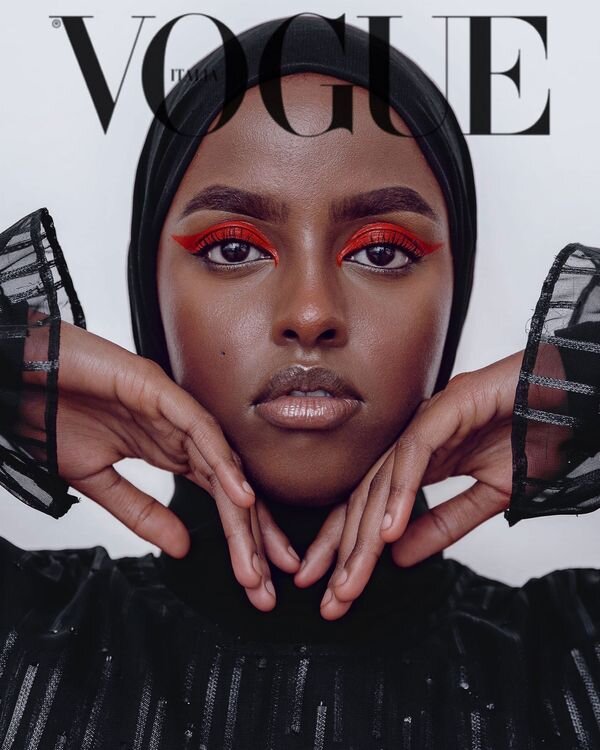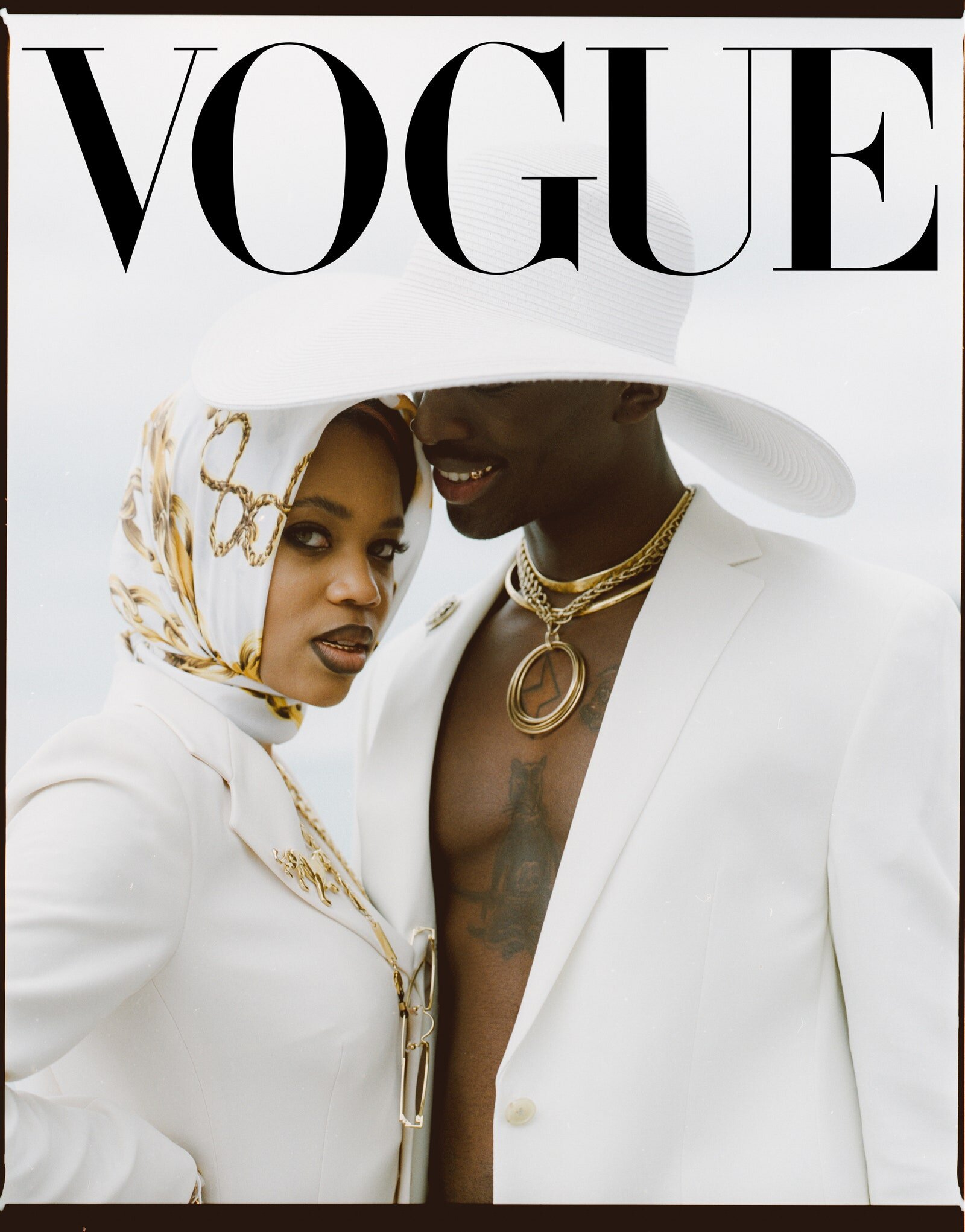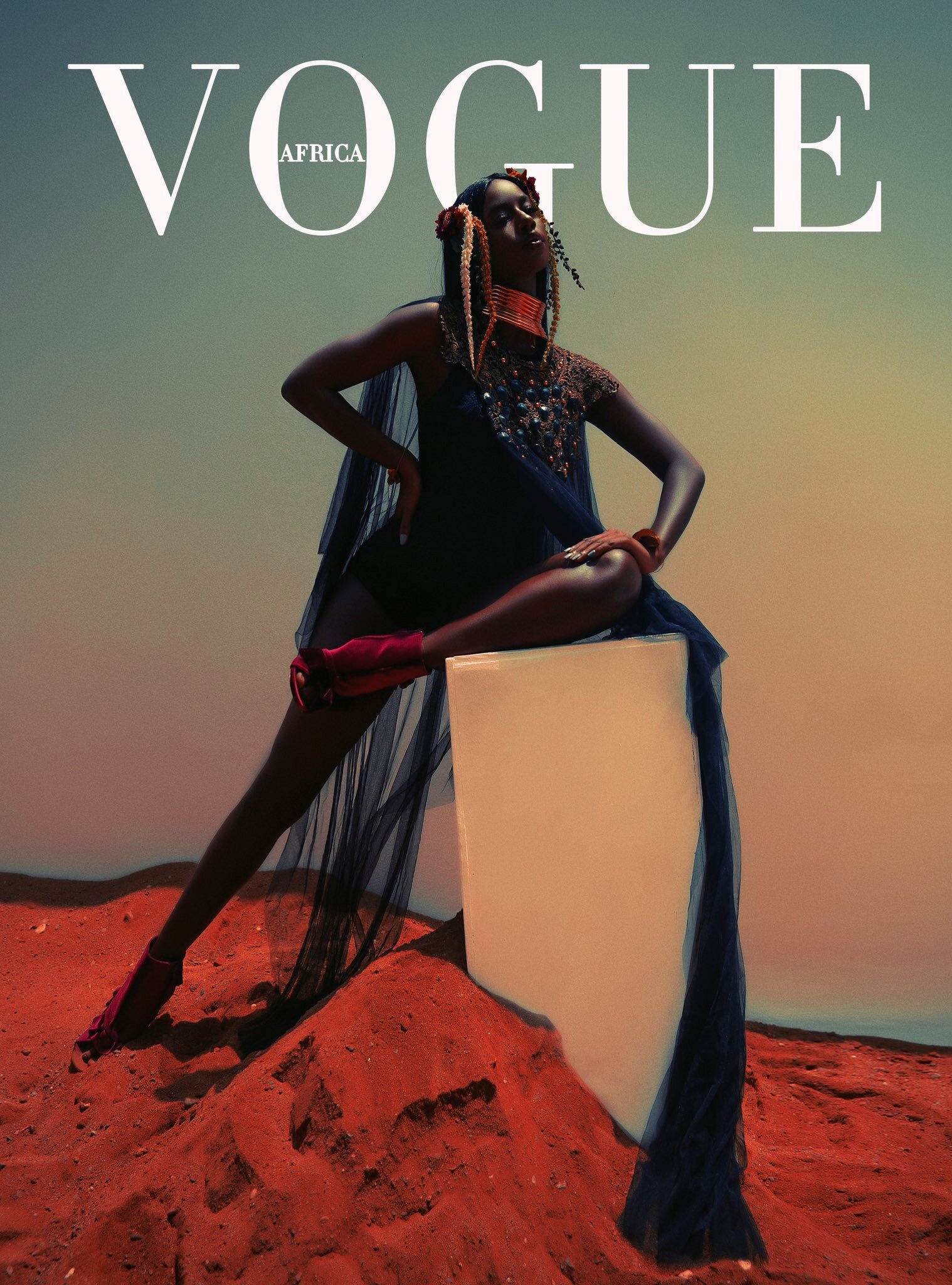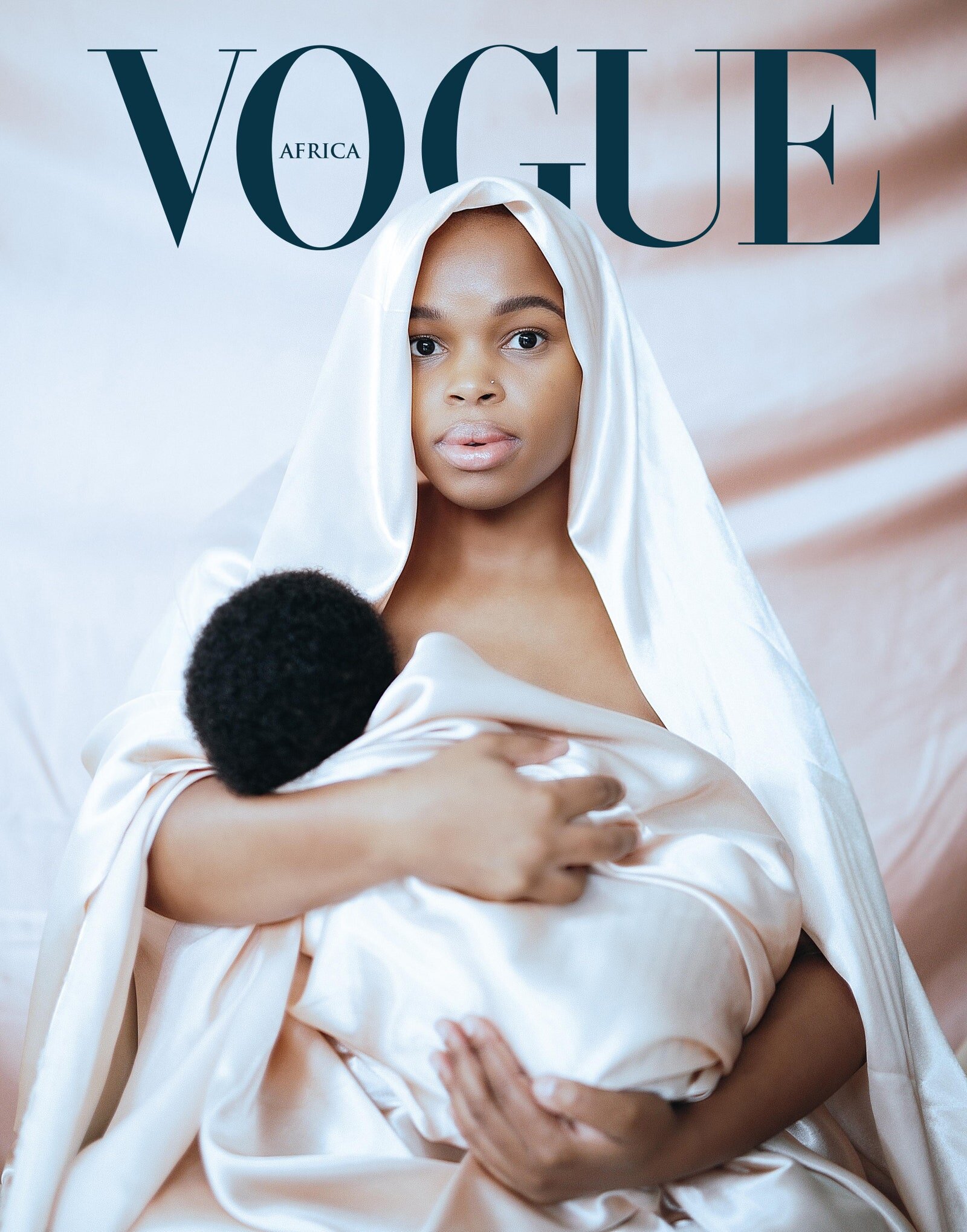Purpose Marketing: How to turn meaning into money
Credit: Louise Xin Couture in Vogue Scandinavia (@louisexincouture)
Purpose.
An ominous word that is thrown around usually during mission and vision statements.
But what does it mean and why is it not only a “nice to have” but a “you’re dead if you haven’t” conversation for brands?
When I speak with brands about the new consumers (aka Gen Z), some of the most prevalent (but nicely hidden) emotions are
Fear: “They are so opinionated, that’s just dangerous for our brand’s reputation!”
Bewilderment (another word no one uses anymore): “How can kids expect so much of us?”
Amazement: “Anti-racism, gender equality, equity, climate justice - how can we keep up with them?”
apart, of course, from the total reliance on research insights that put the Gen Z consumer into neat boxes (of race, ability, gender, faith, orientation, etc.).
Here’s what we forget:
Gen Z want us to do better because they want the world to be better.
And no, perfection is the goal, striving for improvement is.
And guess what - inclusion. Including Gen Z - not only in well-researched data sets but actual human involvement into strategies and processes.
Gen Z Marketing benefits:
By identifying their needs and how your brand meets them, you
Drive sustainable growth and empower your Gen Z brand for the future
Turn Gen Z observers into loyal customers and ultimately passionate fans and advocates
Provide unforgettable brand experiences that live on forever
Become the preferred solution for Gen Z users, increasing your sales (aka money in your pocket)
Create lasting authentic relationships so that you can access their community insights, influence, and reach
Contrary to past business practices, business practices are not separate from brand marketing anymore.
You got to walk the talk.
That’s where Purpose Marketing comes in.
To nail your brand positioning for the next generation and to stay relevant, here are six Purpose Marketing strategies you shouldn’t miss out on. Strategies, that will not only position your brand as meaningful and relevant to Gen Z consumers, but that will turn that meaning into money!
But first, let’s find out why purpose actually matters for any brand and business.
Why Purpose Matters for Business Success
Companies with high levels of purpose outperform the market by 5%–7% per year – and they grow faster and have higher profitability.
In other words: Purpose means profits.
When a brand markets itself to an audience, they are using three techniques to captivate its audience:
They either demonstrate the benefits of their product or business, they inspire certain feelings and associations or they aspire to a bigger purpose.
When you think about which brands you associate with most, you will understand that most of them tap into the strongest emotion: aspiration.
Of course, we love seeing inspirational campaigns and feel a certain emotion that evokes a reaction. But truthfully, what we are seeking is to be part of something bigger and long-lasting.
Aspiration.
The difference between inspiration and aspiration is intensity, longevity, and identification.
Purpose wins consumers, talents, and investors
A “Strength of Purpose” study surveyed over 8,000 consumers across 8 global markets. The study showed that when a brand has a strong Purpose, consumers were:
4.0 times more likely to purchase from the brand;
6.0 times more likely to protect that brand in a challenging moment;
4.5 times more likely to champion the brand to friends and family.
Patagonia’s “Don’t Buy This Jacket” ad
Gen Z is not only figuring out how to tackle climate issues but they push brands to find purpose, take stands on social issues and build intentionality into their practices.
And they have the spending power to threaten their existence if they don’t.
With the emerging power of Gen Z, being purpose-led is no longer a “nice to have” but a necessary brand foundation to captivate consumers as retain customers loyalty.
But purpose doesn’t only matter for people buying from your business, it’s crucial for talent and investor attraction.
Talents are looking for purpose-led brands. In fact, a sense of empowerment through making a tangible difference is 2x more important than a higher salary for employee retention.
Formerly known as Corporate Social Responsibility, or in investors terms ESG (Environmental, social and corporate governance), purpose becomes more relevant for investors who are increasingly applying non-financial factors as part of their analysis process. ESG uses metrics to analyze an organization’s ethical impact and sustainability practices, evaluate corporate behavior, and determine the future financial performance of companies.
Larry Fink, the CEO of BlackRock, the world's largest asset manager, has set a new precedent by announcing that he will avoid investing in companies that "offer a high sustainability-related risk."
“It’s not just that broad-market ESG indexes are outperforming counterparts. It’s that within industries (…) we are seeing another divergence: companies with better ESG profiles are performing better than their peers, enjoying a sustainability premium.”
Sustainable practices (both social and environmental) mean good, secure future business and therefore investors’ priorities.
Venture capital companies like Social Capital even quantify the importance of diversity and representation in brands for business success. According to its founder Chamath Palihapitiya - who drives funding more businesses that have strong inclusivity strategies and practices - firms should examine the facts carefully and begin to see diversity as a source of profit.
Purpose Marketing
Most definitions of Purpose Marketing revolve around some kind of “good cause” notion. However, purpose goes deeper than an activity brand rally behind.
Purpose Marketing is about recognizing, using and communicating the power, position, and influence your brand has to provide equity.
Equity (for both people and the planet) is about redistributing power to create fair access, opportunity, and advancement for all.
Purpose Marketing does not only touch the message that is communicated, but it spans across the entire message-to-consumer pipeline, including:
What is the intention behind the content
Who is creating the content
How are they getting paid & treated
What are the conditions in which the content is being created
How truthful are is external message/image to the brand’s internal reality
Many purpose-led brands focus on two major purpose topics or causes: sustainability and inclusion (/representation/diversity).
To ensure that you don’t fall into the trap of “branded Wokeness” or “woke-washing” (where companies depict a different image than their reality), here are six essential Purpose Marketing Strategies that you should adopt into your brand.
6 Purpose Marketing Strategies
Inclusive storytelling (don’t speak for us but amplify our voices)
Solution-oriented inclusion (contribute to solutions our communities are looking for)
Equitable representation (provide your power and reach to platform our work)
Equitable pay (pay us what we’re worth)
Collaborative partnerships (acknowledge us as equals)
Sustainable solutions (build to last)
1) Inclusive storytelling
Purpose marketing rule Nr. 1: Don’t speak for us but amplify our voices!
Marketers love to own their stories. Creating elaborate narratives that boost brand performance is, after all, their job description. But when approaching purpose projects and telling stories that go deeper than your own experiences, your own voice and imagination are not enough.
Especially when telling stories of communities that are marginalized, it’s not good enough to “lend a voice to the voiceless” or “speak for those who are often unheard”.
Instead, pass the mic!
Everyone has a voice, but not everyone has a platform to share it freely.
The secret to creating authentic purpose stories is to produce them authentically, together with the voices that you seek to present.
After all, who can tell our stories better than ourselves?
Example: adidas Modest Swimsuit Campaign
A great example of this Purpose Marketing strategy was the launch of the adidas Modest Swimwear in the Beyond The Surface campaign:
The adidas’ Full Cover swimsuit launch could have easily become a brand story that highlights the incredible story behind the product. Instead, it did not only feature but centered on the consumer it was made for. With a storytelling piece by Sudanese-British sports activist and spoken word poet Asma Elbadawi. In a specially commissioned poem, she highlighted her relationship with the water and the confidence it can bring to all women, regardless of “their shapes, ethnicities, abilities, or faith”.
While many might have expected this campaign to only center on Muslim women who choose to cover their bodies for religious reasons, this message resonated with women around the world. Women who would cover as well (fully or partially), but for reasons such as personal style, skin conditions, disabilities, or sun protection. And women who wouldn’t necessarily buy the modest swimsuit but bought into the message and movement as a whole, and therefore be more likely to become a consumer.
Find out more about this campaign in the Case Study:
Quick Tips:
Team up with storytellers from the communities you want to highlight and
Let them speak authentically, this includes mistakes I’ve seen often in the industry such as:
don’t try to make them more “mainstream”,
don’t ask them to change their accent to be “more amicable to a wider audience”,
don’t ask them to intensify their accent to sound more “urban”
Ask them about personal as well as community-wide topics they’d like to highlight and address
Find commonalities between your brand values and theirs to ensure on-brand narrative alignment
Be open to bold and new ideas to win over new consumer markets and segments
2) Solution-oriented inclusion
Purpose marketing rule Nr. 2: Contribute to solutions our communities are looking for!
Walk the talk. That’s how simple it is (simple, not always easy).
If you address a problem, we want you to either
have a solution to the problem or
be in the process of finding a solution to the problem
Important here is the relevance to your brand industry and area.
We don’t expect a clothing company to end world hunger. But how about revolutionizing the highly toxic industry to become more sustainable? Or providing affordable clothing for our communities? Or innovating a consumption-obsessed society to become more circular?
Play in your lane and, again, invite the communities you seek to benefit to help you find solutions that work for both them and you.
Example: Bumble
Bumble is a great frontrunner in Purpose Marketing. Not only because the company’s origin story is inherently built on purpose (former Tinder co-founder Whitney Wolfe-Herd left the startup to start an app that is centered around the women’s experience in dating), but also because they continuously walk the talk.
While they revolutionized the women’s experience in the online dating world by introducing various tools such as
Women making the first move (i.e. sending the first message)
Passport identification (to avoid catfishing)
Virtual video-dating (to ensure safe connections and provide innovation during a global pandemic)
They also activate their purpose by passing laws against cyber flashing and provide inclusive business practices for their employees (e.g. a minimum of six months' paid leave for the birth, adoption, or surrogacy of a child; a minimum of 12 weeks off per calendar year to care for a family member; a minimum 20 days paid leave for victims of domestic violence or other violent crimes; a minimum of 15 days paid grievance/bereavement leave for deaths in the family or miscarriage).
All your brand actions are relevant for your marketing efforts to be fruitful.
Bumble #MyLoveIsBlackLove
Beautifully showing Strategy Nr 3: Equitable representation by having Bumble’s Naomi Walkland guide the activation and Irish-Ghanaian creative Keziah Quarcoo behind the lens shooting the campaign.
Quick tips:
Team up with
Teams across your brand before you approach a marketing campaign and find out
What solutions you can commit to in light of your campaign
What networks you can join that already are approaching solutions
What projects you can fund that are providing solutions in communities your customers are part of
Communities that your consumers are part of and find out
What projects do they have that fit your marketing campaign
How you can highlight, support or fund their work
Whether you can activate a “for every sale X% or X$ goes to project X”
3) Equitable representation
Purpose marketing rule Nr. 3: Provide your power and reach to platform our work!
No one expects you to do the work alone.
Instead, team up.
With both internal and external partners and communities that have done the work already, and are eager to scale it with a brand like yours.
Purpose marketing requires representation on all fronts. Whether that is behind the scenes of a marketing campaign or in the business meetings that address actionable solutions.
Some important rules here include:
Choose consciously who is behind the gaze. In other words, who’s imagination is highlighting the people and projects of your marketing material?
Add and platform, don’t exploit. Are you jumping or taking advantage of a person’s or community’s popularity for the benefit of your brand? Or are you actually adding to their work, and using your platform to highlight them for long-term impact?
Nothing about us without us. Is the person or community in front of the camera represented behind the camera? This is extremely important to provide understanding, nuance, and comfort to the story and storytellers.
Example: #VogueChallenge
To stir some discussion, here is an example of what Vogue missed out on all along to hire Black creatives for their iconic Vogues covers.
The piece “Vogue Could’ve Looked Like This All Along” by Andrew Nguyen, shows the incredible response to the 2020 statement by Anna Wintour’s statement that “Vogue has not found enough ways to elevate and give space to Black editors, writers, photographers, designers, and other creators.” A safe way to say “It Took 126 Years To Hire A Black Photographer To Shoot A Cover”.
It portrays Black creatives across the world reimagining their own Vogue covers, centering black beauty, intersectionality, and (you guessed it) equitable representation.
While Vogue covers have always portrayed icons like Naomi Campbell and Beyoncé, the people behind the lens, in the dressing room, leading makeup and hair didn’t represent the diversity we witnessed in front of the lens.
Neither the racial justice uproar nor the beauty showcased in the #VogueChallenge, should have been the wake-up call for marketers to hire more equitably. We should have known all along. Because it’s the right thing to do, and it’s good for business.
Vogue UK did a first good job catching up with the need for more representation behind the lens, with their September issue photographed by Misan Harriman highlighting 20 social justice activists.
And Vogue Scandinavia took a bold step featuring the Louise Xin Couture - runway - SS21, showcasing high fashion with bold sustainability and inclusion statements such as “I stand with Tigray” and “Free Uyghur: end all genocide”.
This boldness is most likely a result of hiring culture leaders into leadership positions, such as Rawdah Mohamed as their first hijabi fashion editor.
Who you want to target with your marketing campaigns, is who knows best how to communicate with them.
It’s time that brands around the world understand that we don’t only belong on mood boards, we belong in board rooms.
4) Equitable pay
Purpose marketing rule Nr. 4: Pay us what we’re worth!
When I talked earlier about the entire message-to-consumer pipeline, it refers in a large part to the importance of purpose when no one is looking. Yep, I understand that’s a new concept in marketing (shouldn’t everybody be looking?), but it’s crucial to your long-term success as a brand.
Pay 👏🏽 us 👏🏽 what 👏🏽 we’re 👏🏽 worth!
When you work with diverse creatives, agencies, and communities for the sake of telling impactful purpose stories, pay up!
Communities of color and creatives that fall into various diversity dimensions (be it ability, faith, sexual orientation, or gender), are underpaid in the marketing industry. By a lot. The general pay gap is still at 16% for women, and even more for women of color, immigrant women, and mothers. For influencers it’s even more, women influencers were being paid 33% less than their male counterparts, despite making up 77% of the industry. With Black women being at the bottom of the payment hierarchy, according to a Bloomberg report on how marketers are underpaying Black influencers.
And while brands should thrive for equal pay, they should also consider equitable pay. Creatives of color often have to go through the process of digging up trauma to highlight injustices. The emotional labor involved in creating captivating purpose stories is immense. Brands have to start acknowledging and compensating those creatives accordingly.
5) Collaborative partnerships
Purpose marketing rule Nr. 5: Acknowledge us as equals!
Gen Z is a generation of an entrepreneurial mindset. As digital natives, they’ve built their own brands early on through the democratization the internet provides. Whether through social media or physical communities that gather behind a common purpose, creatives no longer rely on big brands to “validate their influence”.
When working on purpose projects, include the communities you aim to add value to. Instead of trying to become a leader in the field yourself (without established credibility), reach out to those who already have a strong track record.
Most importantly: don’t hire them for a project, collaborate with them.
Agency and independence are important values for Gen Z creatives and having ownership of their own projects are key. Acknowledge creatives as equals and find a way to add to their organization while doing the work you can do in your field.
Here it’s crucial to see yourself as a partner and sponsor to the influencers and communities you connect with. Do you have the industry recognition or the money to make things happen? Do they have the authenticity in the community and the creative power to tell a captivating story? Partner up and provide from what you have to uplift what they have.
Long-lasting authentic relationships can provide faster and deeper credibility in the market than a fancy ad campaign that you pulled off yourself can ever have.
6) Sustainable solutions
Purpose marketing rule Nr. 6: Build to last!
On-offs are not an option. People can see through a brand that merely tries to jump on trends.
Let’s look back at Lousie Xin and her viral fashion show. Not only did the couture brand stand for bold messages of human rights that most brands fear expressing so clearly, but the brand itself is also built on providing sustainable solutions. Self-taught designer Louise Xin found launched the brand as the first rental-only none sale couture brand in Scandinavia and the world.
This is a bold decision for a fashion brand that operates in an industry known for climate pollution (as it’s responsible for 10 % of annual global carbon emissions) and towards a clear circular business purpose.
Purpose efforts that aren’t sustainable, are worthless. To become a leader in the purpose space, you need longevity.
Strive for legacy in the efforts you gather behind, by following the last 5 strategies. Create truthful relationships, strive for equity in representation and treatment of your storytelling partners, and thrive for real solutions that can change the world.
What was your favorite strategy? Leave it in the comments below!
And if you’re eager to build out your purpose marketing, book a call to discuss your brand vision and strategy.












